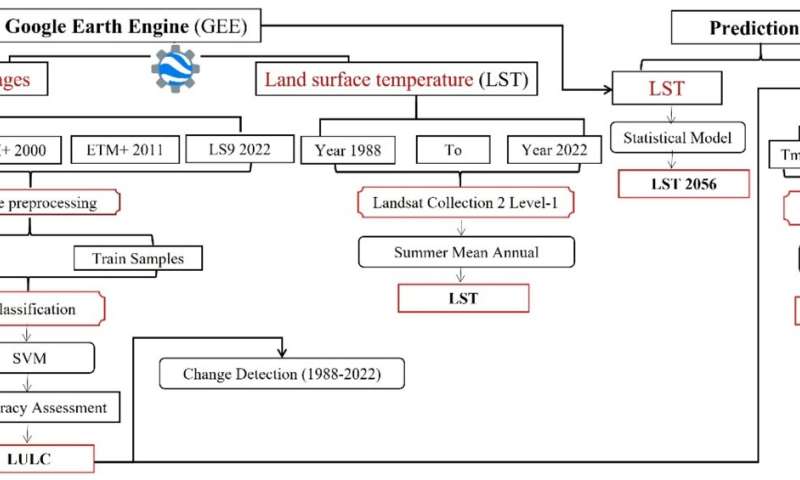Researchers use machine learning to show how urbanization is warming the Earth

Agriculture, industry, and even human activities change ecosystems. In an arid climate, the countryside should act as a refrigerator. The surface there heats up less and equalizes the overall temperature. However, with the development of cities, the area of rural areas decreases. RUDN University researchers assessed how urbanization and human activity affect soil surface temperature in the example of Egypt. For their study published in Sustainability, the authors used historical data and made a forecast for the next 33 years.
"Due to the transformation of natural landscapes into urbanized areas, vegetation is being replaced by concrete and asphalt, which absorb and radiate more heat than natural surfaces. Therefore, urban areas become significantly warmer than rural areas. That is the urban heat island effect. So it is essential to understand the relationship between human activities, urbanization, and temperature change. This is crucial for mitigating the consequences of climate change," said Dmitry Kucher, Ph.D., head of the Scientific Center for Research, Integrated Design and Development of Urban and Agricultural Development, RUDN University.
Environmentalists explored an urban area in the governorate of Kafr el-Sheikh in northern Egypt. To study the long-term effects of urbanization, researchers used satellite images from the Landsat program, which carried out observations from 1972 to 2021. The resulting large data set was processed using machine learning. Researchers then built a simulation that projected until 2056.
RUDN University researchers determined that there are six types of surface in the study area: cultivated land, empty land, urban surfaces, natural vegetation, Lake Burullus, and fish farms. Since 1988, human activity has increased urban surface area by 6,283 acres while agricultural land area has decreased by 3,950 acres.
The share of empty land decreased from 28.3% to 0.7%—it began to be used for urban development, agricultural land, and fish farms. The average temperature rose from 32.4℃ to 33.6℃. It is expected that by 2056 the temperature will rise by 3 degrees to 36℃. The area of agricultural land is projected to decrease by 11.48%, the area of urban development will increase by 4.6%, and fish farms by 6.1%.
"We predicted changes in land use and surface temperatures. Urban sprawl harms the environment: temperature changes are entirely due to human activity. Local authorities must pursue policies that will reduce the seizure of land by cities and limit the temperature rise," said Dmitry Kucher, Ph.D., head of the Scientific Center for Research, Integrated Design and Development of Urban and Agricultural Development, RUDN University.
More information:
Wael Mostafa et al, Impacts of Human Activities on Urban Sprawl and Land Surface Temperature in Rural Areas, a Case Study of El-Reyad District, Kafrelsheikh Governorate, Egypt, Sustainability (2023). DOI: 10.3390/su151813497
Provided by Russian Foundation for Basic Research